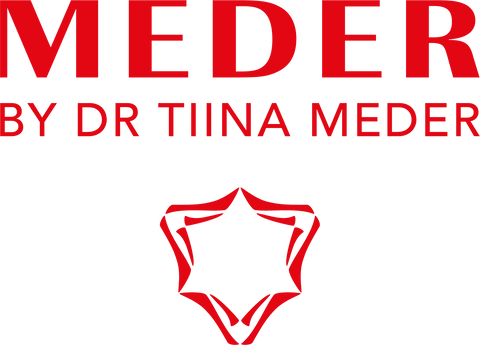
Have you ever wondered why some people suffer from acne while others never experience it? You might have oily but clear skin, while your friend with normal or dry skin struggles with persistent breakouts. Until recently, this seemed like an unsolved mystery. However, scientific research over the last few years has shed light on the complex mechanisms behind acne formation — and oxidative stress appears to be one of the key missing pieces.
Acne development depends on multiple interconnected factors: genetic predisposition, diet, stress, hormonal fluctuations, oxidative stress, antioxidant levels, and the balance of the skin microbiome. No single factor causes acne on its own; it’s the interplay of several that determines whether skin stays clear or breaks out.
This complexity explains why some people with oily skin never get acne, while others with low sebum production do. The same applies to adults with stable hormones who continue to experience inflammation and blemishes — oxidative stress is often the driving influence.
The role of oxidative stress in acne has only recently been recognized, but research shows it plays a surprisingly significant part in the process. Today, oxidative stress is considered both a biochemical marker of acne development and a useful indicator for monitoring treatment success.
Oxidative stress occurs when there’s an imbalance between the production of reactive oxygen species (ROS), such as free radicals, and the skin’s natural antioxidant defense system. This imbalance damages cells, lipids, and proteins, setting off an inflammatory cascade that leads to acne lesions.
Reactive oxygen species (ROS) or free radicals attack sebum components, especially squalene, creating squalene peroxides. These highly comedogenic molecules clog pores, trigger inflammation, and worsen lesions.
Oxidative damage weakens the skin barrier, making it more permeable to irritants and microbes. This environment supports the growth of bacteria such as Cutibacterium acnes and Staphylococcus aureus.
Oxidative stress activates pathways like mTOR, PPARγ, and Toll-like receptors, increasing sebum production, cell keratinization, and persistent inflammation.
Immune cells release ROS to fight pathogenic strains of overgrown C. acnes, but it damages local tissue, creating a self-perpetuating cycle of inflammation.
Clinical studies show that higher oxidative stress correlates with more severe acne and lower levels of natural antioxidant enzymes such as superoxide dismutase and catalase.
Conventional acne therapies — benzoyl peroxide, antibiotics, retinoids, and salicylic acid — focus on reducing sebum, bacteria, and speeding up cell turnover. While effective for teenage acne, these treatments rarely address oxidative stress or microbiome imbalance. As a result, they often cause dryness, barrier damage, sensitivity, and rebound inflammation, which worsen oxidative stress over time.
A more holistic, science-based approach targets oxidative stress and restores microbiome balance using antioxidants, prebiotics, probiotics, and botanical actives.
A key coenzyme in cellular energy metabolism, niacinamide supports NAD+/NADH production, enhances antioxidant defence, reduces inflammation, and balances sebum. It also strengthens the skin barrier and boosts repair processes. Concentrations around 4–5% are proven most effective for acne-prone skin.
Flavonoids and polyphenols from plants such as grapes, green tea, rosemary, and olive leaves effectively neutralize free radicals and reduce inflammation. EGCG (from green tea), quercetin, resveratrol, and piceatannol are particularly powerful for acne management, combining antimicrobial and antioxidant benefits.
Kimchi, the Korean superfood, is rich in probiotic bacteria like Leuconostoc kimchii. When applied topically, these probiotics help restore healthy skin flora, suppress C. acnes without harming beneficial microbes, calm inflammation, and enhance hydration. The fermentation process also boosts natural antioxidant levels, increasing resilience against environmental stressors.
Noni Stem Cells (Quora Noni™)
Noni plant stem cells block bacterial communication (quorum sensing), preventing C. acnes from forming aggressive biofilms. They calm inflammation and restore microbiome balance while strengthening the skin barrier. New technology called Plasma Rich in Cell Factors (PRCF™) uses advanced stem cell tech to unlock every active compound from plants creating molecular synergy. Instead of ordinary extracts, stem cells are grown and primed to create a lysate packed with targeted bioactives and all natural cell factors. This breakthrough makes Noni stem cell lysate especially potent: it gently inhibits harmful skin bacteria, prevents tough biofilms, and supports your skin’s healthy microbiome for smoother, clearer results.
Maclura Stem Cells (Seboclear™ MP)
Bioflavonoids from Maclura stem cells selectively inhibit C. acnes, reduce inflammatory enzymes, normalise sebum production, and even counter hormonal triggers by inhibiting 5α-reductase. They deliver retinol-like renewal and reducing sebum production up to 30% in first weeks of use without irritation.
Together, these advanced ingredients offer a biomimetic, microbiome-safe approach to acne prevention and healing.
Eu-Skin oil-free moisturiser, created by Dr. Tiina Meder, represents the new generation of acne skincare. It combines Noni plant stem cells, Kimchi-derived probiotics, 4% niacinamide, and panthenol to calm inflammation, regulate sebum, reduce oxidative stress, and restore microbiome balance.
Independent in vitro studies show that Eu-Skin Cream eliminates 100% of acne-causing C. acnes and reduces S. epidermidis by 97.83%, helping reestablish a healthy skin microbiome.
How to Use: Apply to clean skin twice daily for at least eight weeks.
When to Expect Results: Visible improvement usually appears within a few weeks, with most users achieving clear, balanced skin after three to four months of consistent use.
For optimal results, follow the complete Meder Antioxidant Skincare Routine based on niacinamide, prebiotics, probiotics, plant antioxidants, and Maclura stem cells.
Step 1: Start with Energy-Net Cleansing Mask enriched with probiotics and niacinamide. For deep cleansing apply it on the dry skin and leave for 2 minutes while brushing teeths. Wash the cleansing mask off with cool water.
Step 2: Apply Energy-Soin Serum. Lightweight gel based enriched with niacinamide and antioxidant blend of extracts derived from blueberry, citruses, cane sugar, aloe vera and maple leaves.
Step 3: Apply Eu-Seb Active Serum. Anti-acne serum based on Noni and Maclura plant stem cell lysate enriched with natural prebiotics and probiotics. Reduces sebum production, calms down inflammation and prevents formation of comedones.
Step 4: Apply Eu-Skin Anti-Acne Moisturiser. Oil-free lightweight emulsion fights acne, restores healthy microbiome, moisturises and brightens skin.






